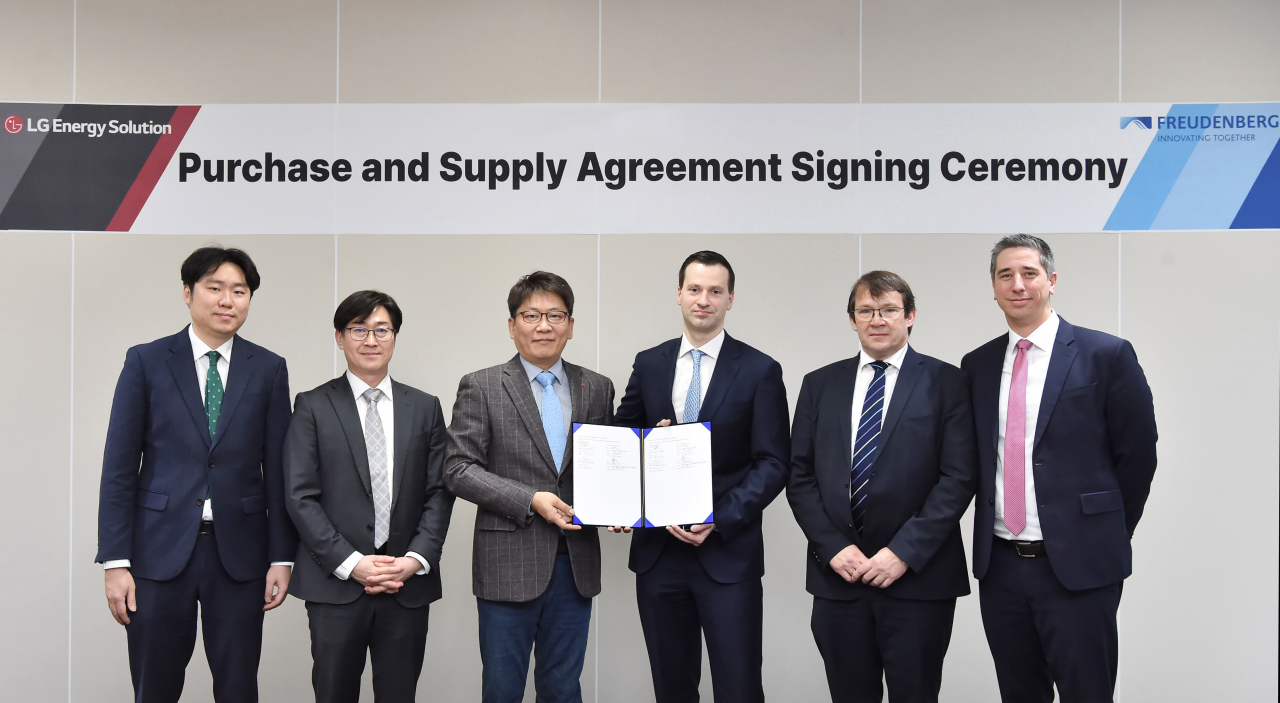LG Energy Solution to supply commercial EV battery modules to FEPS
Korea's top EV battery maker vows expansion in burgeoning heavy-duty EV markets in the US, Europe
By Byun Hye-jinPublished : Feb. 2, 2023 - 15:13

LG Energy Solution said Thursday it has forged a partnership with Freudenberg E-Power Systems, a US-based clean energy systems provider affiliated with Germany's Freudenberg Group, to provide battery modules for commercial electric vehicles.
Under the agreement, the battery maker will supply 19 gigawatt-hour battery modules that can power more than 50,000 heavy-duty EVs such as buses and trucks or 270,000 passenger EVs.
FEPS plans to assemble LG Energy Solution’s battery modules into packs and sell them to major commercial vehicle companies in North America.
Battery modules require technologies that protect cells, the basic units of batteries, from external shocks including heat or vibration. They are then put together as a cluster to make up a pack with a system that controls and protects the battery.
“LG Energy Solution has a competitive edge in the battery market, with a wide range of standardized module lineups based on years of experience in the module and pack businesses,” said an official from LG Energy Solution.
With its renewed push for green business overseas, the battery maker vowed to create a strong foothold in the burgeoning commercial EV market in the US and Europe.
The company plans to scale up leadership based on its experience in the passenger EV business. This includes extensive cylindrical and pouch form factors, module lineups and stable safety testing solutions using battery management system and quality control.
The market size of heavy-duty EVs is smaller than passenger EVs, but it is considered as a value-added market, the battery maker said.
“The vehicles install higher battery volumes, and the car manufacturers sign a long-term contract with battery providers. The US and Europe are implementing tighter regulations on combustible engine cars, making the market more attractive,” it added.
According to data from market tracker SNE Research, the battery market for light commercial vehicles, medium and heavy commercial vehicles and buses worldwide is expected to expand from 37 GWh in 2022 to a maximum of 574 GWh by 2030. The average annual growth rate is estimated at more than 40 percent.
LG Energy Solution said in a recent conference call that the company is seeking to create supply chains in North America starting early this year.
The firm is well prepared to meet the requirements of the US’ Inflation Reduction Act, according to Lee Chang-sil, chief financial officer at LG Energy Solution.
It aims to produce 1 million EVs in the US annually by 2025. Aside from two plants in Michigan and Ohio, it is planning to open three additional plants in the US states of Tennessee, Michigan and Arizona and another in the Canadian province of Ontario.
Last year, the battery maker posted record-high earnings, driven by increased demand for EVs worldwide. Revenue surged on-year by 43.4 percent to 25.6 trillion won ($20.8 billion) in 2022, and its operating profit jumped to 1.2 trillion won, a 57.9 percent increase.







![[KH Explains] How should Korea adjust its trade defenses against Chinese EVs?](http://res.heraldm.com/phpwas/restmb_idxmake.php?idx=644&simg=/content/image/2024/04/15/20240415050562_0.jpg&u=20240415144419)











![[Today’s K-pop] Stray Kids to return soon: report](http://res.heraldm.com/phpwas/restmb_idxmake.php?idx=642&simg=/content/image/2024/04/16/20240416050713_0.jpg&u=)